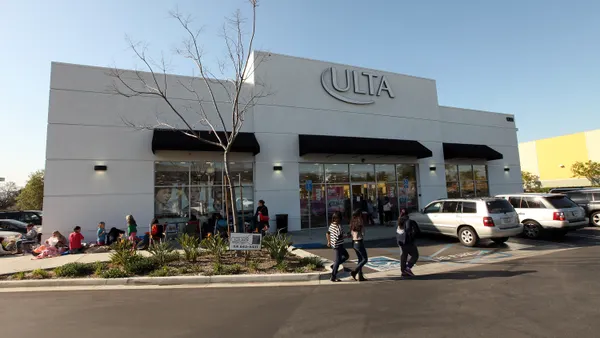Dive Brief:
- UPS has become an investor in reverse logistics startup Optoro in an effort to better manage both the transportation and disposition of returns and excess inventory this post-holiday season, The Wall Street Journal reports.
- UPS already aims to simplify returns services by offering preprinted return shipping labels and other options that allow pickup and exchange right at the consumers door. Aligning with Optoro is a further step into reverse logistics for the delivery company.
- Optoro applies algorithm-based analytics to determine where the retailer will best recoup its losses on unwanted items. In addition to eBay sales, it also operates both BLINQ.com and BULQ.com to facilitate faster turnaround on returns.
Dive Insight:
With just hours left to Christmas, retailers and fulfillment providers may soon take a breath as the challenges of the peak holiday shopping season come to an end. A momentary breath that is, as the end of the peak holiday season also marks the beginning of a smaller, but significant test for retailers and logistics providers alike: returns.
As shipment volumes rise, companies such as UPS have found themselves handling significantly more returns as well. This January, UPS expects to handle more than 5.8 million returned packages a week, with 1.3 million alone expected to be returned on January 5. Given the surge in expected returns that day, UPS has labeled it "National Returns Day."
Supply chains have spent decades perfecting their forward logistics process, but reverse logistics has routinely been neglected. As a result, many retailers will lose money in the form of product waste, space and even the loss of potential future sales.
The inefficiencies in this process opened the door for the D.C.-based reverse logistics start-up company Optoro to create innovative software solutions, empowering retailers to determine the fate of the product at the point of first touch.
"When goods come back as a return, suddenly they can be in five or six different conditions. It could be new sealed, new sealed damaged box, it could be open box, lightly used, heavily used, broken ... and every single one of those conditions could have a different disposition and a different price point," Optoro co-founder and CEO Tobin Moore told Supply Chain Dive.
Optoro's software helps retailers identify these conditions and then, through data analytics, assign a path for greatest recouped value — whether through recycling, resale to consumer through e-commerce, return to vendor for a minor credit, liquidation to parts or upstream replacement.
"The goal is to cut out any redundant touches and any waste along the way, and connect those products directly to their next best home and get the highest recovery for the retailer or their brand and also reduce the environmental waste produced by the process," Moore added.
Given the ample opportunity for improvement in the reverse logistics space, UPS decided to invest in and partner with Optoro.
"The front part of [the end-to-end cycle] UPS has done well and will continue to do well — the forward getting the package to someone's doorstep, and then the beginning of reverse — add that together with what Optoro does on the back end, we really think no-one else can create an end-to-end solution like that for retailers," UPS Vice President for Global Retail and B2C Strategy Steve Brill told Supply Chain Dive. "That was the benefit from UPS's point of view."
Returns should not always be seen as a bad thing, but rather an opportunity. A properly optimized reverse logistics process can carry many benefits, including opportunities for sale of additional goods, according to Brill.
"Giving consumers choice and convenience on the reverse matters," Brill added. "If your return rates are too low, or if you make it too difficult to return a product, you actually lose more sales. A certain level of returns is healthy. It typically means your user policy is encouraging people to buy."
Of course, even with an optimal rate of returns — cost-saving opportunities abound throughout the supply chain. Estimates show reverse logistics dilemmas can cost companies up to $260 billion. Prioritizing safe packaging, reducing excess inventory and establishing the returns process as a priority is just the first step.
Suppliers can also do a better job gathering and providing data upfront, Optoro's Moore noted. Understanding what the products are worth farther upstream upon purchase, in order to be able to replace them more immediately for resale, can help further reduce product waste. In addition, exploring technology that will allow consumers to better size a product — particularly in the apparel industry — upon listing can "reduce return rates in a lot of areas," Moore added.
This story is part of our ongoing coverage of the 2016 holiday shopping season. You can browse our holiday page for more stories.











